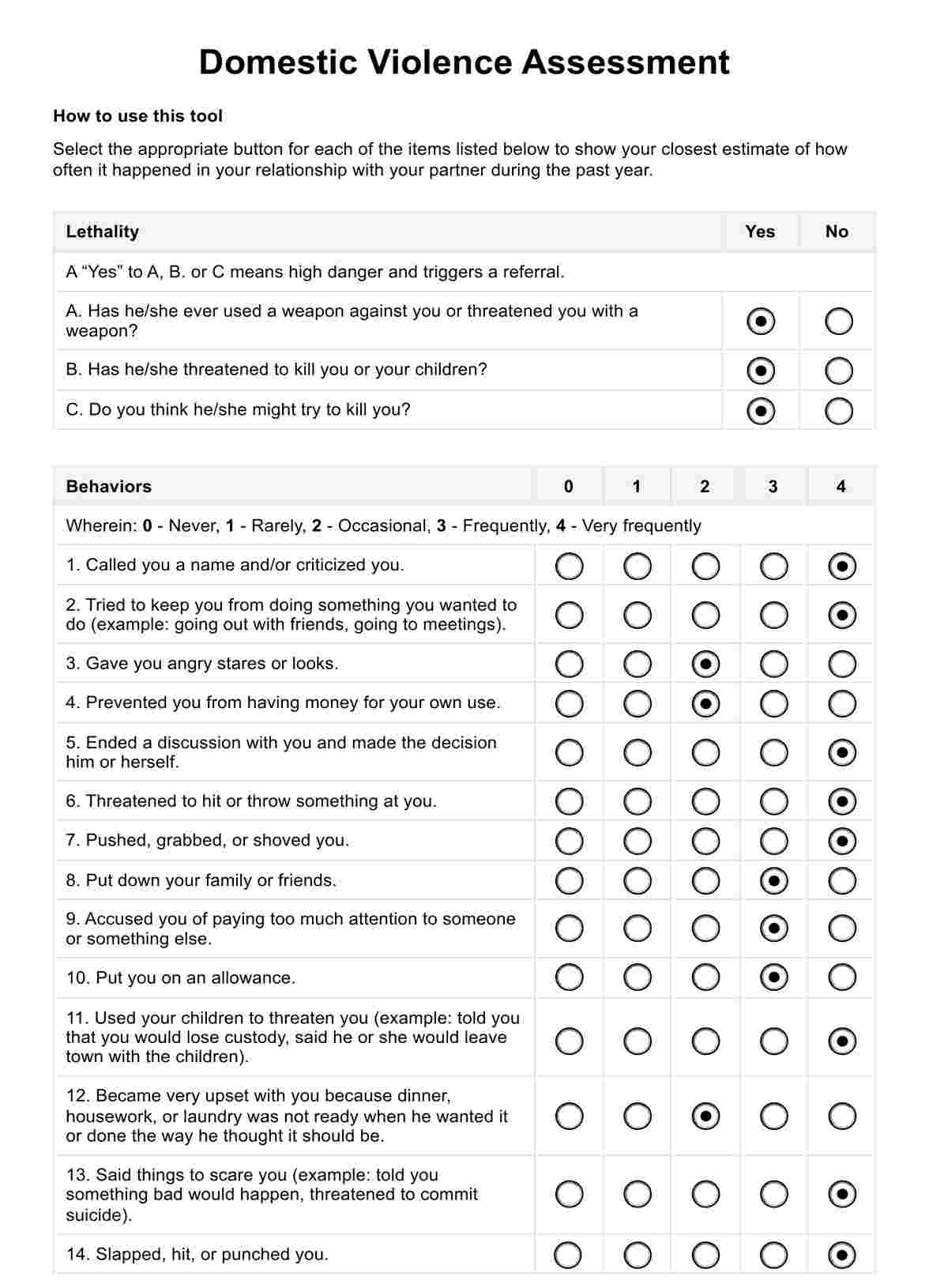The abuse assessment screen includes questions about the frequency and severity of physical, emotional, and sexual abuse experienced by the individual, as well as inquiries about safety concerns and risk factors in their relationship.

Domestic Violence Assessment
Understand how Domestic Violence Assessment works with our comprehensive guide and example. Download Carepatron's free PDF to learn about identifying and addressing domestic violence.
Domestic Violence Assessment Template
Commonly asked questions
The three general approaches to violence risk assessment are clinical judgment, actuarial risk assessment tools, and structured professional judgment. These approaches incorporate various factors such as history of violence, mental health, and substance abuse to assess the risk of future violence.
During a violence assessment, various factors are evaluated, including the individual's history of violence, current risk factors, protective factors, mental health status, substance use, and access to weapons. The assessment aims to determine the likelihood of future violent behavior and inform appropriate intervention strategies.
EHR and practice management software
Get started for free
*No credit card required
Free
$0/usd
Unlimited clients
Telehealth
1GB of storage
Client portal text
Automated billing and online payments











